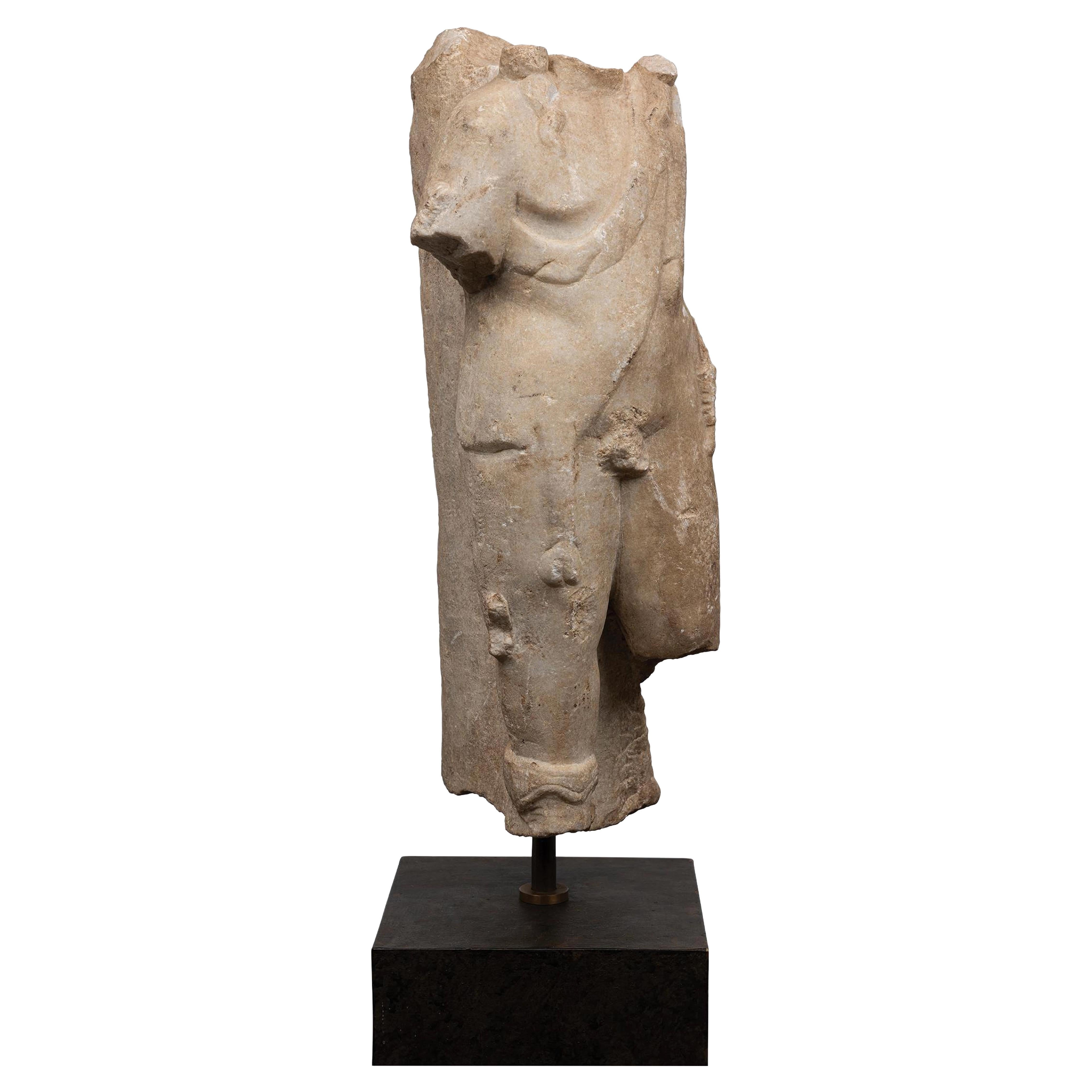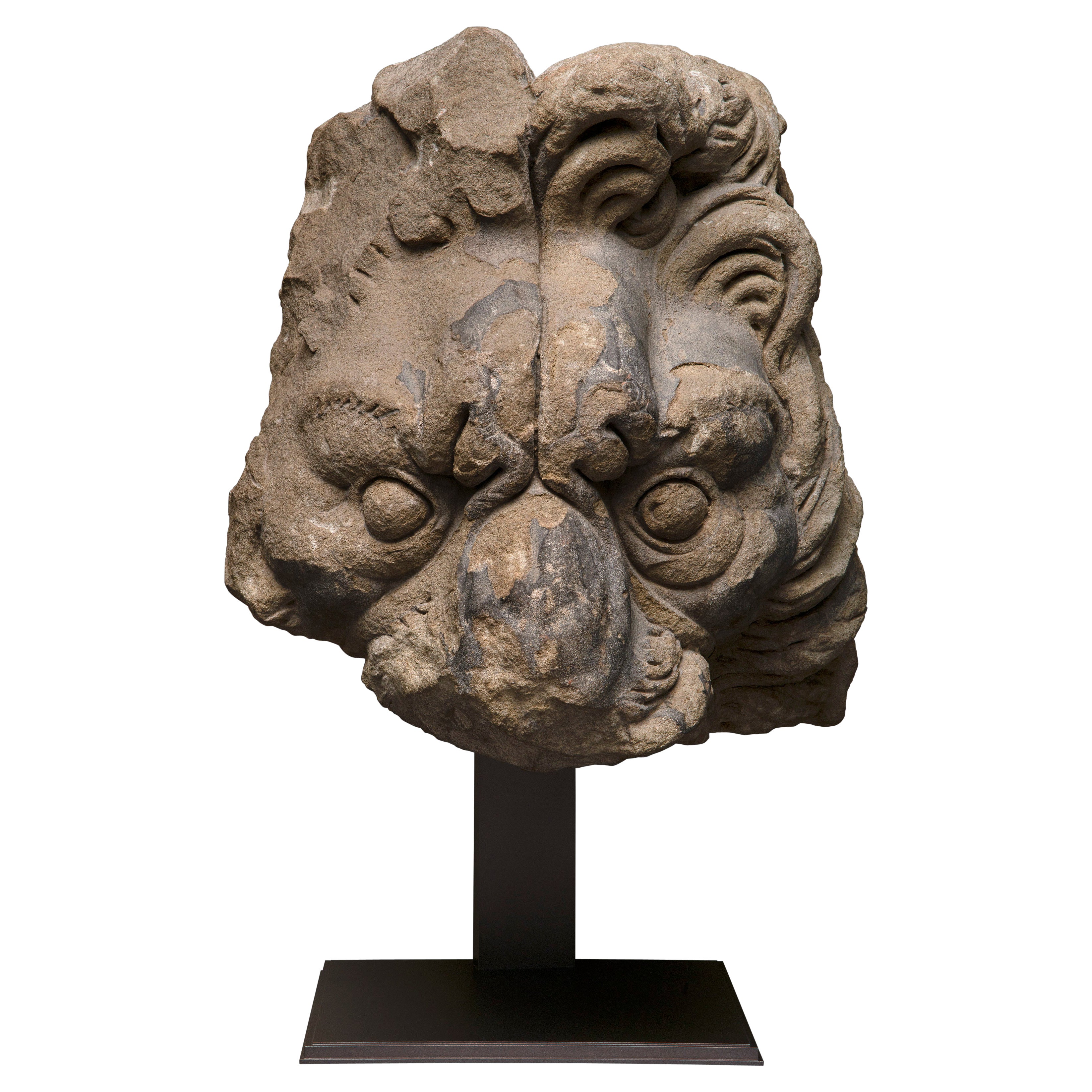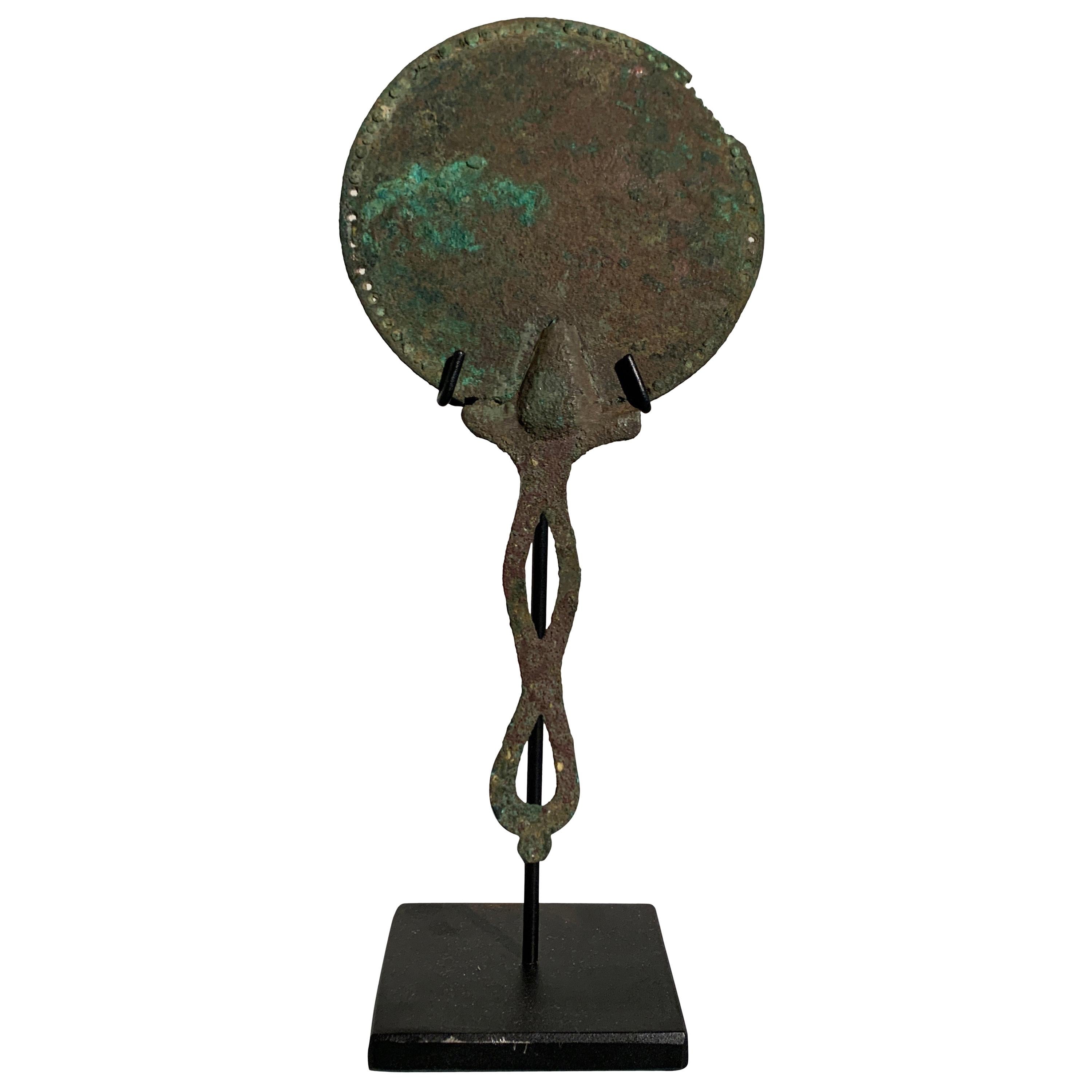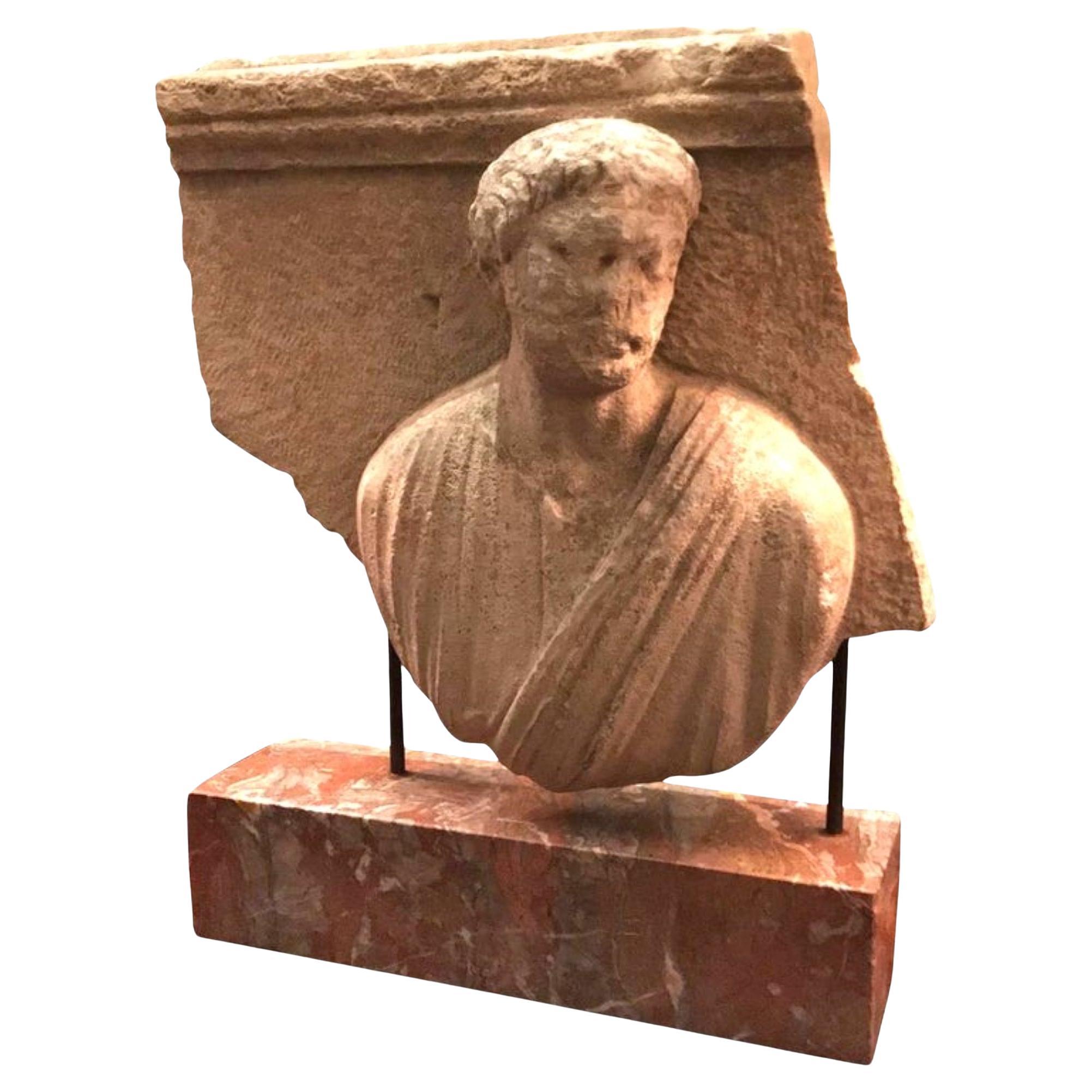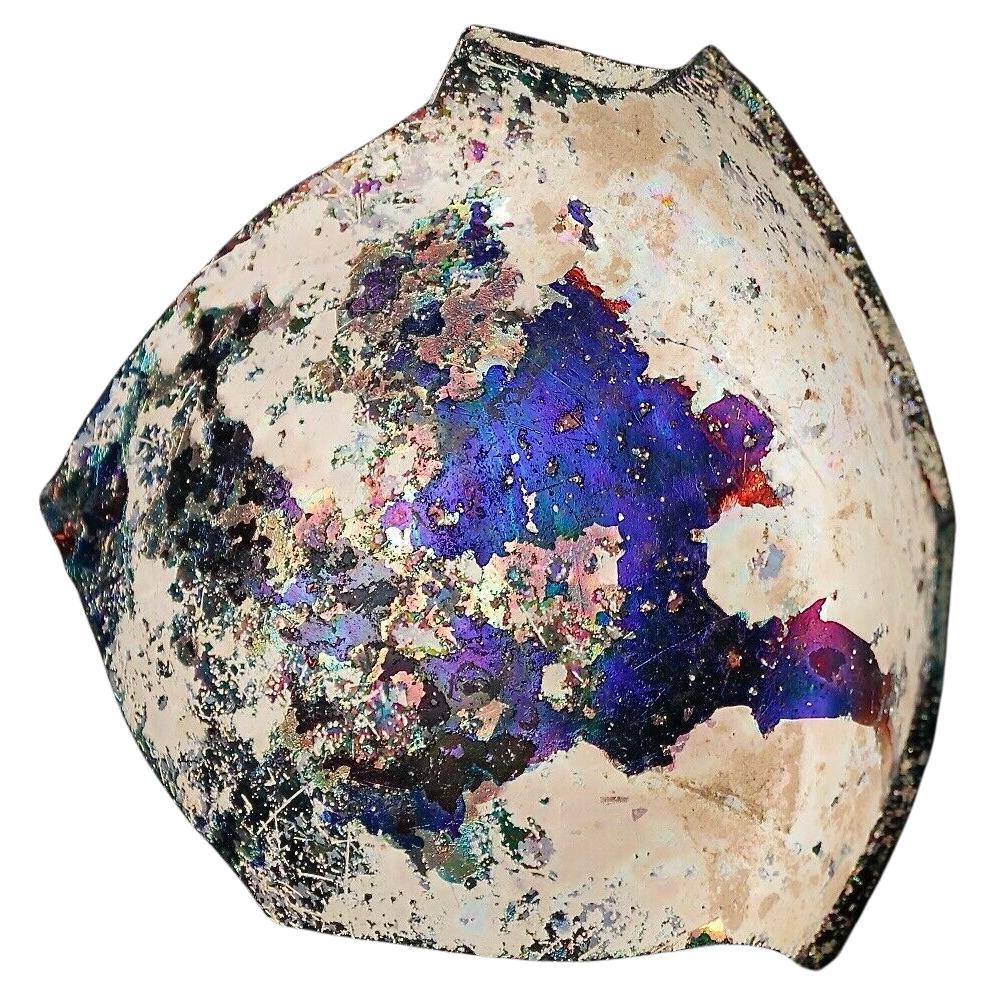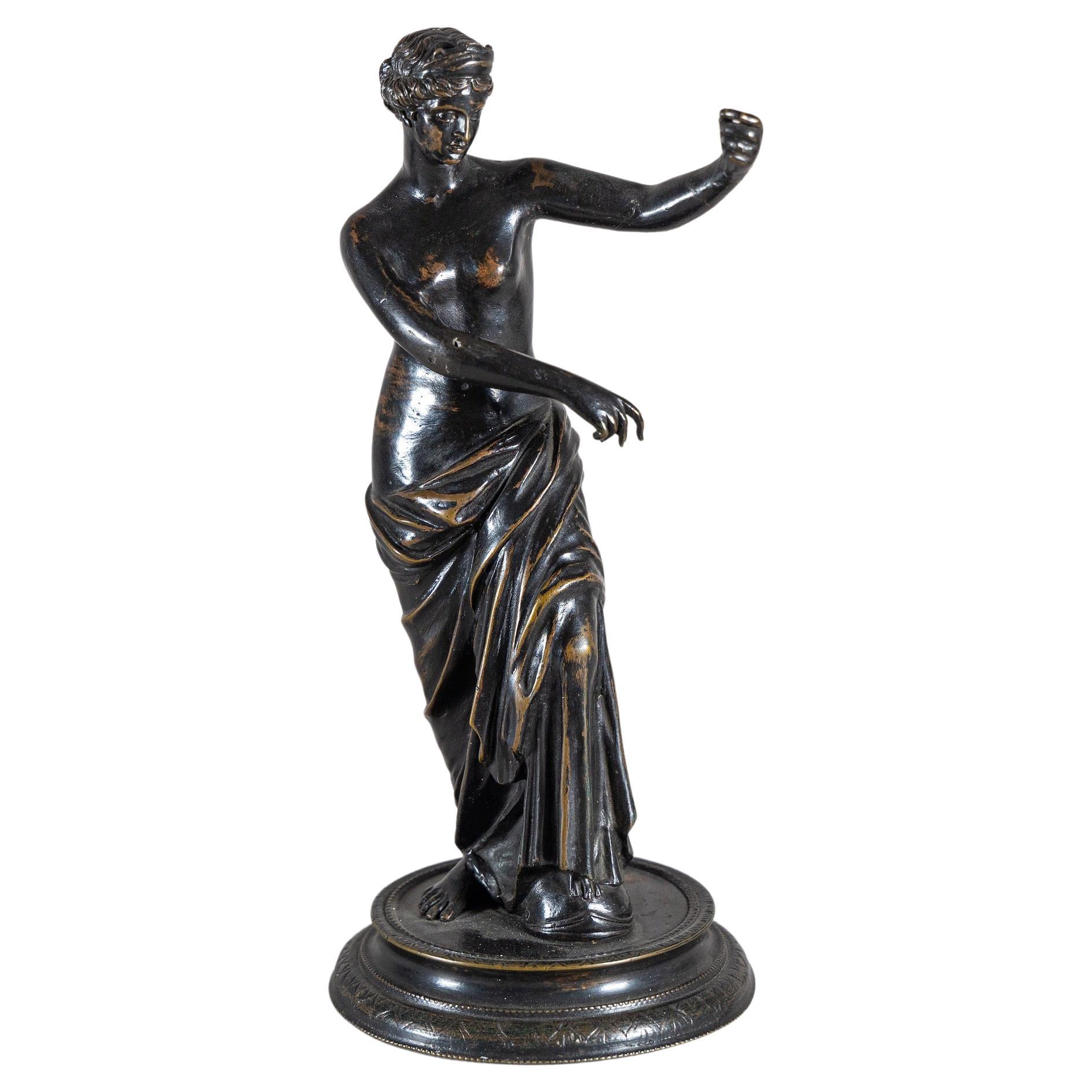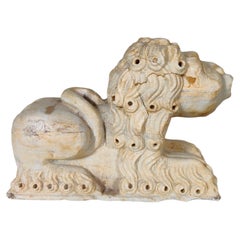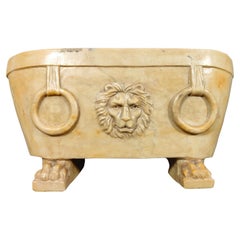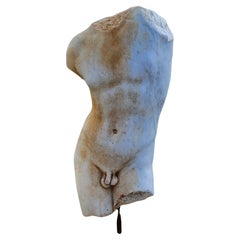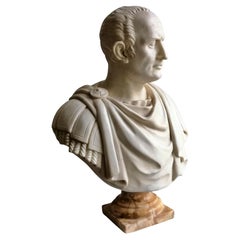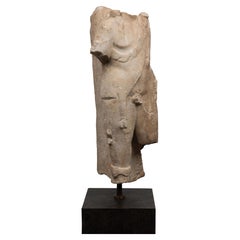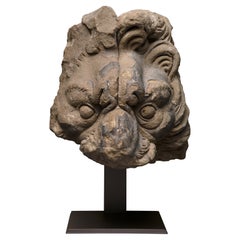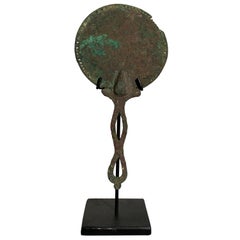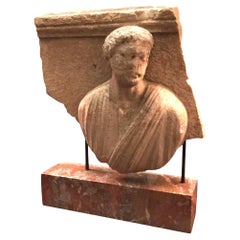Items Similar to Roman Marble Trapezophorus circa 1st-2nd Century A.D
Want more images or videos?
Request additional images or videos from the seller
1 of 18
Roman Marble Trapezophorus circa 1st-2nd Century A.D
About the Item
A Roman marble trapezophorus in the Form of a Barbarian Dacian young figure.
Circa 1st-2nd century A.D.
Measure: height 24 1/4 inches (62 cm).
Property from Mr. Radu Moldovan, Skokie, Illinois
Provenance:
B.C. Holland Gallery, Chicago, Illinois.
Jonathan Piser, Chicago, Illinois and Mexico, acquired from the above in the 1970s.
Standing with his left leg crossed over the right, and his hands bound before him, and wearing boots, leggings, short tunic bound with a belt, and mantle falling over the back, no restorations.
It is worth noting the high social position of this young man, since he has a gathered tunic with 2 brooches on each side of the shoulder. The position that the figure acquires is "a dignified position" in comparison with other captives in a submissive position.
He has the same position as:Barbarian prisoner Thusnelda, Loggia dei Lanzi, Florence
Early 2nd cent. AD
Discovered in Rome, in 1541 already part of the Capranica della Valle collection in Rome. From 1584 at the Villa Medici in Rome, in Florence since 1787. In the Loggia since 1789.
The inspiration for this sculpture likely comes from the series of bound Dacian captives that decorated Trajan's Forum. The campaign took nearly 50,000 Dacians as slaves and was commemorated on a triumphal column. There the Dacians are depicted in submission and serve as a symbol of Rome's expansion and imperial power.
The last king of Dacia, Decebalus, was a long-standing foe of Rome. In 101 A.D., Emperor Trajan led a major campaign in person to conquer the region. Trajan's engineers constructed an impressive timber bridge over the Danube and the Emperor led his troops into Dacia quickly defeating Decebalus' army. The two sides signed a peace treaty, but Decebalus couldn't resist continuing to raid Roman territory. Soon war broke out again. The Dacians fought vigorously, but Trajan brought overwhelming force to bare employing no fewer than 13 legions. The Romans ground forward inexorable into Dacia eventually capturing the capital city. Decebalus fled with the Roman cavalry in hot pursuit. Finally, with Roman troopers closing in and his bodyguards slain, Decebalus took his own life.
With the death of Decebalus in 106 A.D., the Dacian Wars ended, and the Kingdom of Dacia was annexed and turned into a Roman province. These foreign conflicts resulted in changes to the physical landscape of Rome itself. Dacia was a region with abundant mineral resources and when Rome annexed it, they also took control of especially rich gold and silver mines. Ancient historians claim Trajan acquired nearly 550 tons of gold and silver from Decebalus' treasury. Much of this staggering wealth was expended on spectacular building projects in Rome, the centerpiece of which was Trajan's Forum.
Catalogue note
For a related figure in the Museum of Fine Arts Boston see: Christie's, London, October 24th, 2013, no. 74.
- Dimensions:Height: 24.41 in (62 cm)Diameter: 9.06 in (23 cm)
- Style:Classical Roman (Of the Period)
- Materials and Techniques:
- Place of Origin:
- Period:
- Date of Manufacture:1st-2nd Century A.D.
- Condition:Wear consistent with age and use.
- Seller Location:Madrid, ES
- Reference Number:1stDibs: LU5779231828162
About the Seller
4.8
Platinum Seller
Premium sellers with a 4.7+ rating and 24-hour response times
Established in 2005
1stDibs seller since 2021
339 sales on 1stDibs
Typical response time: <1 hour
- ShippingRetrieving quote...Shipping from: Madrid, Spain
- Return Policy
Authenticity Guarantee
In the unlikely event there’s an issue with an item’s authenticity, contact us within 1 year for a full refund. DetailsMoney-Back Guarantee
If your item is not as described, is damaged in transit, or does not arrive, contact us within 7 days for a full refund. Details24-Hour Cancellation
You have a 24-hour grace period in which to reconsider your purchase, with no questions asked.Vetted Professional Sellers
Our world-class sellers must adhere to strict standards for service and quality, maintaining the integrity of our listings.Price-Match Guarantee
If you find that a seller listed the same item for a lower price elsewhere, we’ll match it.Trusted Global Delivery
Our best-in-class carrier network provides specialized shipping options worldwide, including custom delivery.More From This Seller
View All12th Century Italian Roman Marble Lion
Located in Madrid, ES
Italian Romanesque 12th century marble recumbent lion
12th century Italian roman marble lion
with a stylized mane and tail wrapped around its body a...
Category
Antique 15th Century and Earlier Italian Gothic Animal Sculptures
Materials
Stone
Original 18th Century Roman Marble Lion Bath
Located in Madrid, ES
Original 18th Century Roman Marble Lion Bath
It has the Lions head to the front, rings either side,with a beautifully veined patina
These ...
Category
Antique 18th Century Italian Baroque Figurative Sculptures
Materials
Marble
AMAZING CARRARA MARBLE ROMAN TORSO 19th Century
Located in Madrid, ES
Carrara MARBLE ROMAN TORSO 19th century
HEIGHT 54cm
MAXIMUM HEIGHT 70cm
WIDTH 30cm
DEPTH 20cm
OVERALL WEIGHT 56 Kg
BASE HEIGHT INCLUDED 70 cm
Material White carrara marble
Base in N...
Category
Antique Late 19th Century Italian Baroque Busts
Materials
Carrara Marble
Important Italian Bust "Roman Emperor" 20th Century Carrara Marble
Located in Madrid, ES
Important Italian bust "Roman Emperor" 20th Century Marmo di Carrara
Measure: H: 63cm
perfect conditions
Category
20th Century Italian Baroque Busts
Materials
Carrara Marble
Important Italian Bust "Roman Emperor" 20th Century Carrara Marble
Located in Madrid, ES
Important Italian bust "Roman Emperor" 20th Century Marmo di Carrara
Measure: H: 55cm
perfect conditions
Category
20th Century Italian Baroque Busts
Materials
Carrara Marble
Important Italian Bust "Roman Emperor" 20th Century Carrara Marble
Located in Madrid, ES
Important Italian bust "Roman Emperor" 20th Century Marmo di Carrara
Measure: H: 55cm
perfect conditions
Category
20th Century Italian Baroque Busts
Materials
Carrara Marble
You May Also Like
A Roman Marble Sculpture of Hercules, Circa 1st / 2nd Century AD Ex Sotheby's
Located in ARMADALE, VIC
A Roman Marble Sculpture of Hercules, Circa 1st / 2nd Century AD
The sculpture is nude except for the draped Nemean lion skin.
Provenance: Sotheby's London, December 14, 1981, lot ...
Category
Antique 15th Century and Earlier Italian Classical Roman Figurative Scul...
Materials
Marble
Roman Lion's Protome - Gallo-Roman, 2nd century AD/3rd century
Located in Bruxelles, BE
Roman Lion's Protome
Sandstone
Gallo-Roman, 2nd century AD - 3rd century
Provenance : Private Collection Prof. Giesen (Konstanz on Bodensee), pré 1945
Most likely from the Chateau a...
Category
Antique 15th Century and Earlier German Classical Roman Animal Sculptures
Materials
Sandstone
Roman Bronze Hand Mirror with Beautiful Patina, circa 1st Century
Located in Austin, TX
A simple and elegant Roman bronze hand mirror, late Republic Period, circa 1st century, Italy.
The bronze mirror of simple form. The round face with a pierced border design. The openwork handle...
Category
Antique 15th Century and Earlier Italian Classical Roman Antiquities
Materials
Bronze
2nd Century Italian Stone Sculpture Roman Relief Aristocrat Mounted Antiques LA
Located in West Hollywood, CA
2nd Century Italian Stone Sculpture Roman Relief Aristocrat Mounted Antiques LA . Hand Carved Stone relief Aristocrat mounted on marble Private collector . ...
Category
Antique 15th Century and Earlier Italian Wall-mounted Sculptures
Materials
Stone, Limestone
$23,200 Sale Price
20% Off
Extremely Rare Roman Glass Fragment with Iridescent Patina – 1st–4th Century AD
Located in Fukuoka, JP
A remarkable and rare fragment of ancient Roman glass, dating from the 1st to 4th century AD. The glass is preserved in excellent condition and displays a stunning natural iridescent...
Category
Antique 15th Century and Earlier Italian Classical Roman Abstract Sculpt...
Materials
Glass
Bronze Statuette of Venus, 2nd Half 19th Century
Located in Greding, DE
Small dark patinated figure of Venus on round profiled plinth.
Category
Antique Mid-19th Century European Grand Tour Figurative Sculptures
Materials
Bronze
Recently Viewed
View AllMore Ways To Browse
Roman Cross
Ancient Roman Column
Roman Capital
Roman Brooch
Antique Furniture London Bridge
Ancient Silver Cross
Mexican Silver Brooch
Jonathan Leder
Antique Figural Silver Centerpiece
Arts And Crafts Gold Brooch
Ancient Roman Cross
Belt Brooch
Arts And Crafts Silver Brooch
15th Century Dutch Furniture
Long Leggings
Mexican Silver Belt
Emperor Brooch
Mexican Furniture Turned Legs
